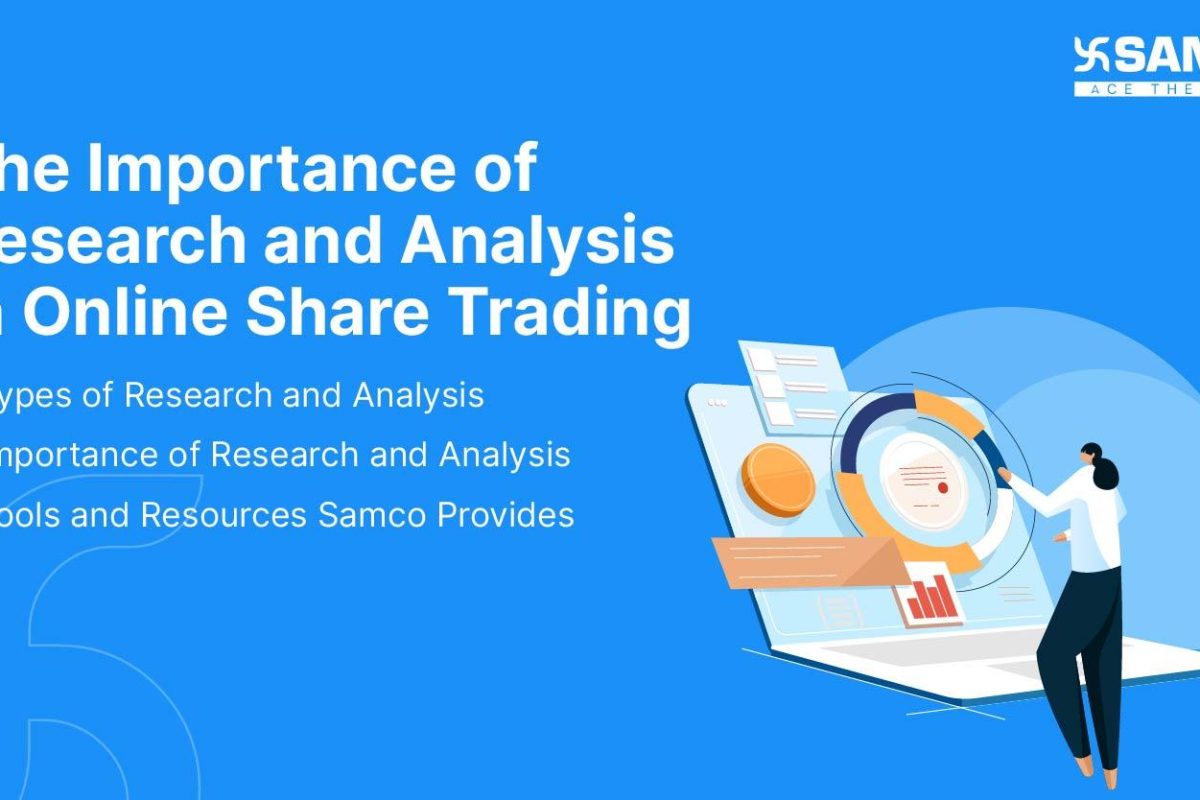Introduction:
In the fast-paced world of online share trading, knowledge isn’t just power—it’s profit. The stock market offers countless opportunities, but behind every successful trade lies research, analysis, and disciplined execution. With trading just a few clicks away, investors now have direct access to markets once reserved for professionals. However, accessibility alone doesn’t guarantee success.
To navigate the volatility and complexity of modern markets, traders must rely on research and analytical tools that transform information into actionable insights. From evaluating financial statements to studying price charts, every decision can be strengthened through data-driven understanding.
This article explores how research and analysis form the foundation of profitable online share trading—covering everything from technical and fundamental analysis to practical tips, tools, and strategies for long-term success.
Understanding Online Share Trading:
Online share trading allows investors to buy and sell stocks through digital platforms, eliminating the need for physical brokers or paper certificates. This convenience has revolutionized market participation, enabling anyone with an internet connection and a trading account to access the stock market in real time.
Through online trading platforms, investors can place instant orders, track live market data, and execute trades efficiently. The accessibility has democratized investing, making it possible for both beginners and professionals to participate in wealth creation.
However, the same ease of access also introduces risks. Stock prices can fluctuate sharply due to market sentiment, economic events, or corporate developments. Without proper research and analysis, traders may make impulsive decisions driven by fear or greed.
To succeed, investors must balance the speed of online trading with informed strategies rooted in data, trends, and sound judgment.
The Role of Research in Trading:
Research is the cornerstone of successful online share trading. It provides the information and perspective needed to identify opportunities, manage risks, and make informed decisions. In trading, research generally falls into two categories—primary and secondary.
Primary research involves gathering first-hand data such as company earnings reports, balance sheets, and management commentary. Traders analyze these details to assess a company’s financial strength and growth potential.
Secondary research includes market news, analyst reports, economic forecasts, and industry data that help traders understand broader trends. By staying informed about global developments—interest rate changes, inflation data, or geopolitical events—traders can anticipate how markets may react.
Research not only helps in spotting opportunities but also in avoiding costly mistakes. It enables traders to recognize overvalued stocks, understand sector rotation, and identify early signs of market reversals.
Ultimately, disciplined research transforms speculation into strategic decision-making—empowering investors to act confidently rather than emotionally in volatile markets.
Technical Analysis: Tools for Timing the Market:
Technical analysis focuses on studying price movements and trading volume to forecast future market behavior. It assumes that all relevant information is already reflected in the stock price and that historical trends tend to repeat over time.
Here are some key tools every trader should know:
Moving Averages (MA): These smooth out price data to identify trends. A rising moving average indicates an uptrend, while a falling one signals potential weakness.
Relative Strength Index (RSI): RSI measures momentum and identifies overbought or oversold conditions. Values above 70 suggest overbought territory, while below 30 may indicate oversold levels.
Bollinger Bands: These show price volatility around a moving average. When prices touch or break the bands, it often signals potential reversals or trend continuations.
Volume Analysis: High trading volume during price breakouts confirms the strength of a move, while low volume can suggest false signals.
Technical analysis helps traders determine when to enter or exit a position. By recognizing patterns and signals, traders can optimize short-term gains and manage risk effectively. When applied with discipline, technical tools provide a structured approach to timing the market rather than relying on intuition.
Fundamental Analysis: Assessing the Value of a Stock:
While technical analysis focuses on price behavior, fundamental analysis evaluates a company’s true worth—its intrinsic value. This approach is ideal for investors seeking long-term growth rather than short-term gains.
Key metrics to consider include:
Earnings Per Share (EPS): Indicates profitability. A rising EPS trend often suggests strong business performance.
Price-to-Earnings (P/E) Ratio: Compares a company’s share price to its earnings. A high P/E may signal overvaluation, while a low P/E could indicate an undervalued stock.
Return on Equity (ROE): Measures how efficiently management uses shareholders’ funds to generate profit.
Debt-to-Equity Ratio: Reveals financial stability. High debt levels may increase risk, particularly in rising interest rate environments.
Fundamental analysis also involves studying macroeconomic factors, industry trends, and competitive positioning. By understanding what drives a company’s revenue, margins, and cash flows, investors can separate strong businesses from speculative ones.
This method helps long-term traders avoid emotional decisions based on short-term volatility, ensuring that every investment is backed by solid financial reasoning.
Combining Technical and Fundamental Analysis
The most successful traders often combine technical and fundamental analysis—a strategy known as “confluence.” Fundamental analysis helps determine what to buy, while technical analysis tells you when to buy or sell.
For instance, an investor may identify a fundamentally strong stock with steady earnings growth and low debt. However, using technical indicators like RSI or moving averages, they can choose the ideal entry point when the stock shows momentum confirmation.
Similarly, technical analysis can signal when to exit a fundamentally sound investment that is temporarily overbought or overpriced.
When both analyses align—say, a stock with strong fundamentals also breaks a key resistance level—it increases the probability of a successful trade. Combining both methods enhances accuracy, minimizes risk, and improves overall trading consistency.
The Impact of Research and Analysis on Trading Success
Numerous studies show that traders who incorporate structured research and analysis outperform those who rely on intuition. Data-driven decision-making helps mitigate emotional bias, reduce impulsive trades, and enhance consistency.
For example, a disciplined trader who studies earnings reports and technical indicators before executing trades is more likely to sustain long-term profitability than one reacting to market noise.
Research-backed trading also strengthens psychological resilience. Knowing why you entered a trade builds confidence, even during short-term price fluctuations.
In essence, research converts uncertainty into strategy. It transforms trading from gambling into a calculated process—where outcomes may not always be perfect but remain consistently informed and measured.
Tools and Resources for Effective Research:
Modern traders have access to an abundance of tools and resources for comprehensive analysis.
Financial News Portals: Websites such as Bloomberg, Reuters, and Money control provide real-time updates, expert insights, and macroeconomic data.
Stock Screeners: Platforms like TradingView, Screener.in, and Yahoo Finance allow traders to filter stocks based on performance metrics like P/E ratio, EPS growth, or volume.
Broker Research Reports: Many brokers, including Samco, offer in-depth company analyses, sector reports, and trading strategies that combine both technical and fundamental insights.
Economic Calendars: Useful for tracking events like earnings announcements, policy decisions, and inflation data that impact market movements.
Using multiple sources ensures a well-rounded perspective. A combination of free and premium tools helps traders stay informed, uncover opportunities, and make decisions with greater precision.
Common Mistakes to Avoid in Research and Analysis
Even the most diligent traders can falter if they misuse information. Common pitfalls include:
Relying on a single source: Cross-verification ensures accuracy and objectivity.
Ignoring macroeconomic factors: Broader economic shifts can influence even the strongest stocks.
Overconfidence in one indicator: No single metric guarantees success; use a balanced approach.
Emotional trading: Letting fear or greed override analysis often leads to losses.
Avoiding these mistakes helps traders maintain clarity, discipline, and data-backed confidence in their decisions.
Conclusion and Call to Action:
Research and analysis form the backbone of successful online share trading. Whether you’re a short-term trader relying on technical indicators or a long-term investor studying company fundamentals, informed decisions always outperform emotional ones.
By dedicating time to continuous learning and disciplined analysis, traders can navigate volatility, manage risk, and identify high-quality opportunities.
Equip yourself with the right tools, refine your research process, and approach every trade with a strategy rooted in knowledge.
Start your research journey today—and turn information into consistent trading success.




 Easy & quick
Easy & quick
Leave A Comment?